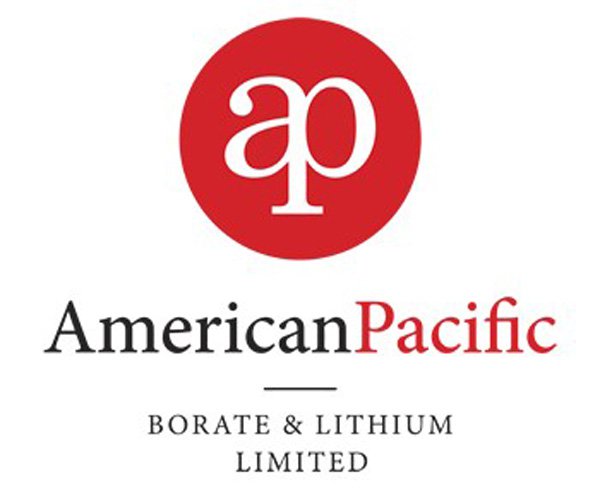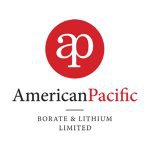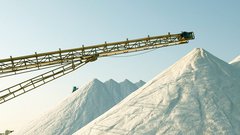Q&A with Anthony Hall, Executive Director at American Pacific
Published 11-DEC-2017 09:51 A.M.
|
7 minute read
Hey! Looks like you have stumbled on the section of our website where we have archived articles from our old business model.
In 2019 the original founding team returned to run Next Investors, we changed our business model to only write about stocks we carefully research and are invested in for the long term.
The below articles were written under our previous business model. We have kept these articles online here for your reference.
Our new mission is to build a high performing ASX micro cap investment portfolio and share our research, analysis and investment strategy with our readers.
Click Here to View Latest Articles
The views and opinions expressed in this article are those of Anthony Hall. You should not act on these views or opinions without undertaking your own due diligence as to the voracity and accuracy of his views and opinions.
American Pacific (ASX:ABR) is developing the Fort Cady Project which is expected to primarily produce borates and lithium in California, neighbouring Tesla’s Gigafactory in Nevada. In addition to these commodities the Hydrochloric acid (HCl) requirements for boric acid production will likely drive a very profitable and separate Mannheim SOP (sulphate of potash) operation.
The company has set a target of developing a boric acid resource, in parallel with developing a lithium-brine operation as a by-product from the Fort Cady Project.
As part of our coverage of the commodities sector, Finfeed tracked down ABR’s Executive Director Anthony Hall, as American Pacific’s corporate spearhead was waiting for a plane at Sydney airport, for an insight into ABR’s overarching strategy.
Hall joined ABR having accrued more than two decade’s experience in Resource project management, venture capital and strategy, including serving as Managing Director at Highfield Resources, guiding the potash developer’s growth from small-cap junior to mid-cap miner in less than 5 years, and overseeing Highfield’s value rise from $10 million to over $800 million in market capitalisation between 2011 and 2016.
Finfeed (FF): Welcome to Finfeed Anthony, and thank you for joining us today.
Anthony Hall (AH): Thanks for having me.
FF: First things first — where are you flying to today?
I’m at Sydney airport, waiting for a flight to London – I’m currently on my way to London, and then onto New York, visiting various places to raise awareness of our company’s three-pronged Borates, Lithium and SOP strategy and the likely developments within commodity markets globally.
[It should be noted here that ABR is a speculative stock and investors should seek professional financial advice if considering this stock for their portfolio.]
FF: Exploring and mining for Borates isn’t very common amongst junior (or large majors for that matter), so why did ABR move into Borates?
AH: The bottom-line reason is simple: Economics. But of course, there are various complexities which we are trying to leverage to our advantage. There are only a handful of companies progressing borates projects such as Rio Tinto and GSC as two examples, and we think we can learn a lot from them and emulate them. But for us it is different, we have a borate focus with a lithium by-product as opposed to a lithium focus with a borate by-product. Our borates sit in mineralisation that is processed everyday for the global borate market. That gives us a large advantage.
Fort Cady gives us a lucrative ‘three-for-one’ Project that can potentially generate high margin boric acid, lithium and now we believe the fertilizer sulphate of potash or SOP. But aside from generating high margin end products, we are developing Fort Cady in a way that should deliver very low upfront and longer term capex. This is very important given the lower the capex the lower the dilution and ultimately the higher the share price.
FF: You have just released your JORC Resource, what does this mean for ABR?
AH: The Company has, in a very short period of time, produced a JORC Compliant Mineral Resource Estimate, proving that the project can supply sufficient borates from a mining operation well past 20 years. The average thickness of the zones intersected also suggests that the proven strategy of solution mining the management has planned at Fort Cady will be successful. Recent test works on lithium recoveries also supports the by-product strategy for lithium production. The project is ideally situated to supply the commodities to the big markets of the US and Asia.
FF: To what extent can ABR’s triple high margin product project ambitions be realised? Do you foresee ABR producing boric acid, lithium and SOP on a par with existing producers?
AH: We released our target for boric acid opex of less than US$400 a tonne. We think this compares very favourably with existing producers. On the lithium and SOP fronts we are targeting lower costs than the majority of existing producers.
On the lithium front, it’s a by-product of boric acid production. That means we focus on boric acid production and end up with a waste stream that contains high concentrations of lithium. As an analogous comparison, we are similar to SQM in that we have a prime boric acid target (SQM has potash) with a likely very cheap by-product called lithium. In the same vein that SQM focuses on potash and is able to produce high-grade lithium from brines in South America — we want to focus on boric acid and produce high-grade lithium from brines in the United States.
SOP production from the industrial process Mannheim traditionally suffers from issues associated with the removal for HCl, but for us we need the HCl to produce boric acid. It all interconnects. My experience in this field also tells me we will have a substantially lower opex than North America’s current major producer, Compass Minerals.
If our development work at Fort Cady works out as I envisage, I think we may surprise quite a few market analysts. By developing a distinct boric acid project that’s viable in its own right; but then supplementing this with a concentrated lithium brine by-product project and then a potential high margin SOP we could become an early lithium-industry pacesetter, in perfect synchronicity with the ongoing energy storage boom.
All in all, we are on track to become one of the most highly competitive mineral explorers in this niche located in one of the best markets in the world.
FF: What is your current timeframe for Fort Cady, with respect to project progress and making a decision to mine?
AH: We have a compressed timeline resulting from the US$50million already spent on the project. Within five weeks of listing we had four confirmatory drill rigs on site. We currently have five and expect to complete all initial drilling activities by Christmas. We have already prepared a test production well for pilot plant tests early next year and are currently in our second phase of mettalurgical test works designed to optimise our flowsheet as opposed to design a new one. Importantly, as mentioned earlier, our host mineralisation is colemanite and every day this mineralisation is turned into boric acid.
We are targeting being in a position to make a decision to mine in the second half of next year and everything going well we could be in production by late 2019.
We are fully focused on completing a Scoping Study by the end of the year which will put some metrics around how strong our project is.. Next year, we will know just how good our lithium prospects are, and use this information to publish an optimised Scoping Study towards the end of the 1st quarter.
FF: Considering the type of mining ABR is considering (and planning for), what is the current status of Fort Cady with respect to environmental permitting and authoritative support?
AH: We are proposing a solution mine which is identical to historic pilot plant operations that produced over a million pounds of boric acid.
Fort Cady has a mining licence in California for commercial scale operations. This permit includes a full environmental impact assessment (EIA) and report. For some junior explorers obtaining an EIA could take years and years. We already have this valuable report in place which is one of the key factors as to why we can see ourselves in production in 2019. The project was fully permitted up to 2009 when the owners cancelled two subordinate permits – the air and water quality permits. Our advice is we need between eight to twelve months to reinstate these permits and we have naturally already commenced a process to reinstate these permits.
FF: Thanks for your time and all your comments Anthony, and have a nice flight.
AH: It’s been a pleasure talking to you and I’m looking forward to take off.
General Information Only
S3 Consortium Pty Ltd (S3, ‘we’, ‘us’, ‘our’) (CAR No. 433913) is a corporate authorised representative of LeMessurier Securities Pty Ltd (AFSL No. 296877). The information contained in this article is general information and is for informational purposes only. Any advice is general advice only. Any advice contained in this article does not constitute personal advice and S3 has not taken into consideration your personal objectives, financial situation or needs. Please seek your own independent professional advice before making any financial investment decision. Those persons acting upon information contained in this article do so entirely at their own risk.
Conflicts of Interest Notice
S3 and its associated entities may hold investments in companies featured in its articles, including through being paid in the securities of the companies we provide commentary on. We disclose the securities held in relation to a particular company that we provide commentary on. Refer to our Disclosure Policy for information on our self-imposed trading blackouts, hold conditions and de-risking (sell conditions) which seek to mitigate against any potential conflicts of interest.
Publication Notice and Disclaimer
The information contained in this article is current as at the publication date. At the time of publishing, the information contained in this article is based on sources which are available in the public domain that we consider to be reliable, and our own analysis of those sources. The views of the author may not reflect the views of the AFSL holder. Any decision by you to purchase securities in the companies featured in this article should be done so after you have sought your own independent professional advice regarding this information and made your own inquiries as to the validity of any information in this article.
Any forward-looking statements contained in this article are not guarantees or predictions of future performance, and involve known and unknown risks, uncertainties and other factors, many of which are beyond our control, and which may cause actual results or performance of companies featured to differ materially from those expressed in the statements contained in this article. S3 cannot and does not give any assurance that the results or performance expressed or implied by any forward-looking statements contained in this article will actually occur and readers are cautioned not to put undue reliance on forward-looking statements.
This article may include references to our past investing performance. Past performance is not a reliable indicator of our future investing performance.






